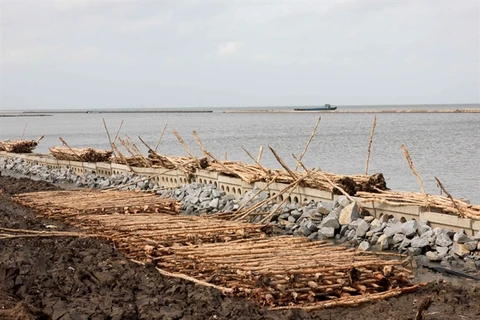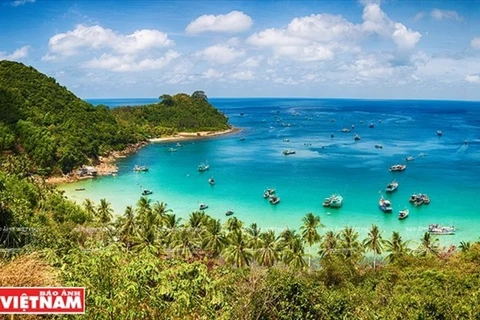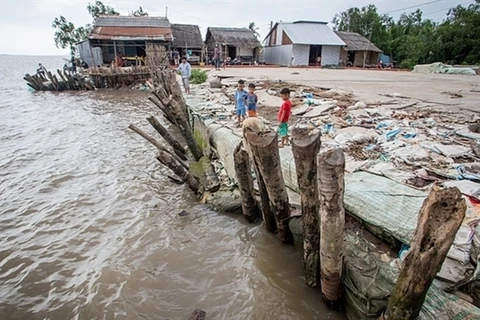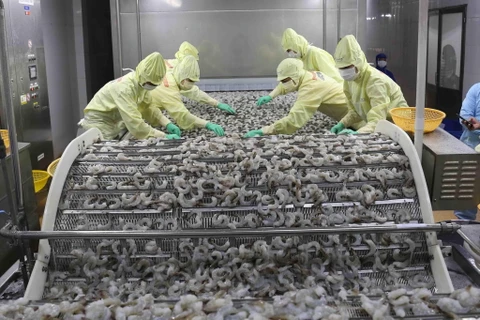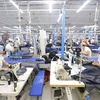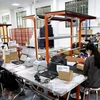 Shrimp being processed at a Minh Phu Seafood Corp factory in Ca Mau. Seafood is one of the province's key export items. (Photo: VNA)
Shrimp being processed at a Minh Phu Seafood Corp factory in Ca Mau. Seafood is one of the province's key export items. (Photo: VNA) Ca Mau (VNA) – The Mekong Delta province of Ca Mau has put forth a series of measures to achieve its goal of earning 1.9 billion USD from export in 2025.
According to Chairman of the provincial People’s Committee Nguyen Tien Hai, the authorities continue supporting enterprises in expanding production, building brand names and applying transparent information and goods origin tracing systems.
Ca Mau has implemented solutions to assist the application of science and technology in production for better productivity and product quality, he went on, adding that local firms are encouraged to ultilise technological advances in a number of support industries, apparel, and farm produce processing.
The provincial Department of Agriculture and Rural Development was tasked with working with relevant agencies in guiding farmers to carry out effective aquaculture, ensuring the material sources for local seafood processing plants.
Ca Mau’s centre for investment promotion and business support planned to intensify trade stimulation activities, and assist firms in seeking new partners in export and boosting competitiveness.
The Ca Mau association of seafood exporters and producers, meanwhile, has worked to offer prompt market updates for its members and urged them to team up to strengthen their export power.
Between 2016 and 2019, the province’s export grew at an annual average of 4.43 percent to reel in nearly 4.4 billion USD in total.
Currently, Ca Mau is getting ready for boosting shipments to the EU after the EU – Vietnam Free Trade Agreement takes effect.
However, export activities still fall short of the local potential due to low competitiveness, the failure in taking advantage of incentives in available free trade pacts, and red tape./.
VNA
